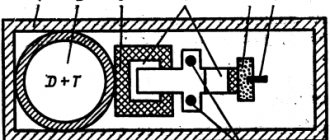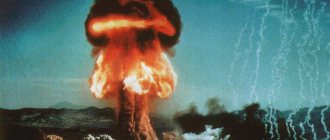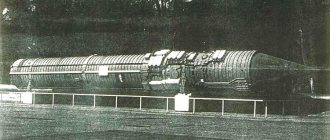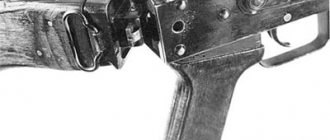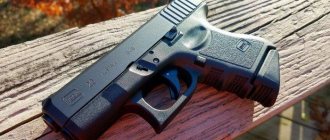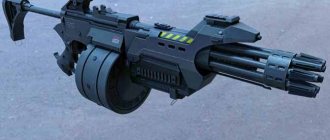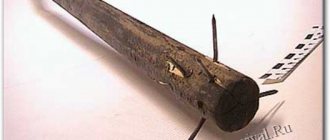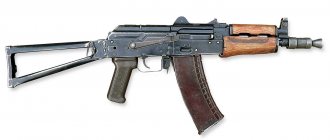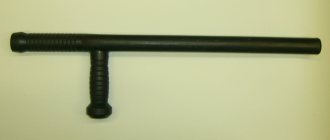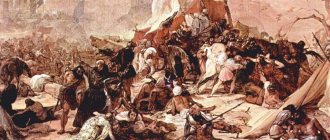Bans on the use of cluster bombs
Such unexploded ordnance is found everywhere after the use of cluster bombs.
Due to the low accuracy and severe consequences of the explosion, cluster bombs are recognized as inhumane weapons. The first convention banning the use of needle and ball ammunition was adopted in 1980.
The situation became more complicated after plastic began to be used in the design of damaging projectiles and the body. Such elements are not detected by metal detectors and x-rays, which complicates the clearance of affected areas and projectiles.
In 2008, the Treaty on the Total Ban of Cluster Munitions was adopted in Dublin. The agreement implies the renunciation of such weapons due to their inhumane mode of action. On December 3 of the same year, the document was signed by 93 states, later their number increased to 108. The agreement came into force on August 1, 2010.
Where were cluster shells used?
Cluster shells were used by the US military during the Korean War. To do this, they used SD-2 ammunition already known from the Germans, which was slightly modified and renamed AN M83. Later, American developers came up with new bombs called Blu 26/B. At that time, these were round ammunition made of lightweight alloy. Moreover, their filling included up to three hundred 5.5-mm balls made of natural steel. And this innovation had a certain effect on the explosion of a cluster bomb.
In addition, cluster bombs were used in Syria, Libya, Yugoslavia and other countries where there was military conflict. Not long ago, people started talking about these dangerous and prohibited projectiles in Ukraine.
Similar aerial bombings were also discussed in the media during recent events in Yemen.
Purpose of the torpedo
Status-6 in testing
Assessing the prospects for using this weapon, experts identify several main areas. At the moment, the main source of destruction is considered to be a nuclear charge, hence the purposes for using the product:
- Approach to strategically important points and objects in the coastal zone, where detonation will cause serious destruction and cessation of the functioning of structures;
- Additional negative factors will be not only the explosion itself, but also its consequences, in particular, contamination of the affected area caused by the tsunami with nuclear waste;
- It is assumed that the torpedo will be able to combat United States nuclear submarines, and destroy them directly at bases and together with these bases;
- Perhaps the torpedo will be able to destroy entire aircraft-carrying groups, since its equipment involves combating mobile watercraft.
One of the proposed options is to install a cobalt bomb on board. The power of the potential charge is estimated at 100 megatons.
Status-6, design
The project is regarded as a serious deterrent to the United States. Some experts say that the creation of such a weapon, capable of destroying an entire city in the coastal zone, is an even greater risk for the state than the absence of US missile defense in its current position.
At the same time, a torpedo is not considered a means of attack, since it takes several days to reach the shores of a potential enemy. A torpedo missile is only a means of delivering a retaliatory strike.
Explosion within
The explosion directed inward compresses the assembly with a pressure of more than a million atmospheres. The surface of the assembly decreases, the internal cavity in plutonium almost disappears, the density increases, and very quickly - within ten microseconds, the compressible assembly passes the critical state with thermal neutrons and becomes significantly supercritical with fast neutrons.
After a period determined by the insignificant time of insignificant slowing down of fast neutrons, each of the new, more numerous generation of them adds an energy of 202 MeV by fission to the substance of the assembly, which is already bursting with monstrous pressure. On the scale of the phenomena occurring, the strength of even the best alloy steels is so minuscule that it never occurs to anyone to take it into account when calculating the dynamics of an explosion. The only thing that prevents the assembly from flying apart is inertia: in order to expand a plutonium ball by just 1 cm in tens of nanoseconds, it is necessary to impart an acceleration to the substance that is tens of trillions of times greater than the acceleration of free fall, and this is not easy.
The history of the creation of the nuclear bomb
Models of the "Little Boy" and "Fat Man" bombs dropped on Japanese cities
The question of who invented the nuclear bomb does not have a clear answer in history. The discovery of the radioactivity of uranium is considered to be a prerequisite for work on atomic weapons. In 1896, the French chemist A. Becquerel discovered the chain reaction of this element, marking the beginning of developments in nuclear physics.
In the next decade, alpha, beta and gamma rays were discovered, as well as a number of radioactive isotopes of certain chemical elements. The subsequent discovery of the law of radioactive decay of the atom became the beginning for the study of nuclear isometry.
However, the German nuclear program was doomed to failure. Despite the successful progress of scientists, the country, due to the war, constantly experienced difficulties with resources, especially with the supply of heavy water. In the later stages, research was slowed down by constant evacuations. On April 23, 1945, the developments of German scientists were captured in Haigerloch and taken to the USA.
The United States became the first country to express interest in the new invention. In 1941, significant funds were allocated for its development and creation. The first tests took place on July 16, 1945. Less than a month later, the United States used nuclear weapons for the first time, dropping two bombs on Hiroshima and Nagasaki.
The USSR's own research in the field of nuclear physics has been conducted since 1918. The Commission on the Atomic Nucleus was created in 1938 at the Academy of Sciences. However, with the outbreak of the war, its activities in this direction were suspended.
In 1943, information about scientific works in nuclear physics was received by Soviet intelligence officers from England. Agents were introduced into several US research centers. The information they obtained allowed them to accelerate the development of their own nuclear weapons.
The date was later moved to early 1957 so that all NATO countries could prepare and join the war. According to Western intelligence, nuclear weapons testing in the USSR could not have been carried out until 1954.
However, US preparations for war became known in advance, which forced Soviet scientists to speed up their research. In a short time they invent and create their own nuclear bomb. On August 29, 1949, the first Soviet atomic bomb RDS-1 (special jet engine) was tested at the test site in Semipalatinsk.
Such tests thwarted the Trojan plan. From that moment on, the United States ceased to have a monopoly on nuclear weapons. Regardless of the strength of the preemptive strike, there remained the risk of retaliatory action, which could lead to disaster. From that moment on, the most terrible weapon became the guarantor of peace between the great powers.
Cobalt bombs in culture
Cobalt bombs (English: C-bomb) were widely used in literature and films of the 1950s and 60s. You can mention the novel “Destination Unknown” by A. Christie (), the films “On the Shore”
S. Kramer () and
“Doctor Strangelove”
by S. Kubrick ().
- In the novel “The Valley of Damnation” (1969) by Roger Zelazny, cobalt bombs are called the cause of cataclysms on the planet.
- The second film about the Planet of the Apes, Beneath the Planet of the Apes (1970), tells about the worship of a cobalt bomb by the descendants of humans - psionic illusionists.
- In S. Lukyanenko’s novel “Star Shadow” (1998), a deterrent weapon is mentioned - shuttles loaded with cobalt and hydrogen bombs in orbit.
- The massive use of cobalt bombs is described in the novel “The Huge Black Ship” by F. Berezin (2004).
- L. Kaganov’s fantastic story “The Black Blood of Transylvania” (2007) describes the bombing of Transylvania by NATO forces using cobalt bombs.
- In H. P. Lovecraft's novel "The Stranger from Outer Space", a new human race will live on Earth after a nuclear disaster due to hydrogen and cobalt bombs.
- The cobalt bomb became the plot engine for episodes 16 and 17 of the third season of Castle (2011).
- In the 2015 television series Whispers, the FBI suspected aliens were manipulating children into creating a cobalt bomb to launch their invasion.
- Cobalt bombs were mentioned in Sterling Lanier's novel Hiero's Voyage.
- In the 1954 story “Exhibit Piece” by Philip K. Dick, a cobalt bomb was mentioned at the very end, for a more open ending.
- In the game "Detroit: Become Human", in one of the endings in Detroit, a cobalt truck is blown up.
- It is mentioned several times in the science fiction series “Star Trek” as a weapon of great destructive power.
- In the game “First Strike: Final Hour”, among the available weapons there is a cobalt bomb.
- In the game “Metro Exodus”, one of the characters suggests that Novosibirsk was hit by a cobalt (erroneously called cadmium) bomb.
- In S. Lukyanenko’s novel “The Threshold” (2019), the use of cobalt bombs is mentioned in the description of the war on the planet Sorgos.
Cobalt-60 discovered at landfills
As of today, there is no reliable information or verified information that any country has created and has a cobalt fragmentation bomb. According to official information, such a fact has not been registered. However, cobalt-60 was still used in various nuclear tests in different countries. So, on September 14, 1957, small quantities of this element were used by the British military during their tests. It has been used as radiochemical tracers. It should be noted that the chemical element in question is an ordinary consequence of nuclear explosions, and the form of their implementation does not matter; it is formed both during open and closed test explosions. Cobalt-60 appears in such explosions as a result of neutron activation of iron. But this process involves not only iron, but also natural cobalt and nickel. The interaction occurs with the iron contained both in the bomb itself (steel shell) and with the iron located in the ground (any soil contains a certain percentage of this element).
For example, the radioactive isotope in question was detected in areas where above-ground and underground nuclear tests were carried out, namely industrial military explosions. These include Soviet tests at the Semipalatinsk nuclear test site, located in the Republic of Kazakhstan, as well as the Taiga, Chagan, Kristal, and Kraton-3 explosions. Of the foreign test sites, it is worth noting the North American test site Alamogordo, where the first explosion of this classification, called “Trinity,” was carried out. Cobalt-60 was also detected at the French test site, which was located in Algeria.
The earth is full of rumors
Despite the fact that “dirty bombs” were never produced or used in actual combat, journalistic “canards” related to this topic regularly appeared in the press, causing mixed reactions from both the public and intelligence agencies. For example, from 1955 to 1963 the British tested atomic charges in Maralinga (South Australia). As part of this program, Operation Antler was carried out, the purpose of which was to test thermonuclear weapons. The program included three tests with charges of different powers (0.93, 5.67 and 26.6 kilotons), and in the first case (code name - Tadje, September 14, 1957) radiochemical tags made of ordinary cobalt (Co-59) were located at the test site ), which under the influence of neutrons turns into cobalt-60. By measuring the intensity of gamma radiation from the tags after testing, one can fairly accurately judge the intensity of the neutron flux during an explosion. The word "cobalt" was leaked to the press, leading to rumors that Britain had not only built a dirty cobalt bomb, but was testing it. The rumors were not confirmed, but the “duck” seriously damaged Britain’s international image - to the point that a royal commission went to Maralinga to check what British nuclear scientists were actually doing in Australia.
Story
The idea of a cobalt bomb was described in February 1950 by physicist Leo Szilard, who suggested that an arsenal of cobalt bombs would be capable of destroying all humanity on the planet (the so-called Doomsday Machine
, English Doomsday device (DDD). Cobalt was chosen as an element that, as a result of neutron activation, produces highly active and at the same time relatively long-lasting radioactive contamination. When using other elements, you can get contamination with isotopes with a long half-life, but their activity will be insufficient. There are also shorter-lived isotopes than cobalt-60, such as gold-198, zinc-65, sodium-24, but due to their rapid decay, part of the population may survive in bunkers.
Szilard's "Doomsday Machine" - a thermonuclear explosive device capable of generating enough cobalt-60 to destroy all humanity - does not involve any delivery means. A state (or terrorist organization) can use it as a tool of blackmail, threatening to detonate the Doomsday Machine on its territory and thereby destroy both its population and the rest of humanity. After the explosion, radioactive cobalt-60 will be carried throughout the planet by atmospheric currents over several months.
On November 10, 2000, information appeared in the Russian press with reference to an interview with Colonel General E. A. Negin to foreign journalists that the group of Academician A. D. Sakharov allegedly offered N. S. Khrushchev to make a ship with cobalt plating containing a large amount deuterium next to a nuclear bomb. If it exploded off the east coast of America, radioactive fallout would fall on US territory.
Mechanism
A cobalt bomb could be made by placing an amount of the common metal cobalt (Co) in a nuclear bomb. When the bomb explodes, the neutrons produced by the explosion would convert the cobalt to the radioactive isotope cobalt 60 (Co), which would be vaporized by the explosion. The cobalt would then compact and retreat toward the Earth with dust and debris from the explosion, contaminating the earth.
deposited Cobalt 60 would have a half-life of 5.27 years decaying into Ni. The nickel nucleus is activated and emits two gamma rays with energies of 1.17 and 1.33 MeV, hence the complete nuclear reaction equation:
+ n → → + e + gamma rays.
Nickel 60 is a stable isotope and does not undergo any further decay after gamma ray emission.
5.27 years, which is half of Ko's life long enough to allow him to settle before significant decay occurred, and for him to be impractical to wait in shelters for him to decay, yet short out enough that intense radiation is generated. Many isotopes are more radioactive (gold 198, tantalum 182, zinc 65, sodium 24, and many more), but they would decay faster, perhaps allowing some of the population to survive in shelters.
In the atomic bomb it was proposed that the weapon's tamper could be made of cobalt. In a thermonuclear bomb, the radiation event around the weapon, usually made of U, could be made of cobalt. These changes would reduce the explosive power (yield) of the weapon somewhat.
What is a cruise missile and what are they?
A cruise missile is a disposable unmanned aerial vehicle with aerodynamic lifting surfaces (wing), an engine and an autonomous guidance system. The outdated name for this aircraft is a projectile aircraft.
Modern cruise missiles are a very numerous and diverse class of attack aircraft. Depending on the flight range, there are KRs.
- tactical (up to 150 km);
- operational-tactical (from 150 to 1500 km);
- strategic (from 1500 km).
Based on flight speed, cruise missiles are divided into:
- subsonic;
- supersonic.
- hypersonic.
Based on the type of deployment, the following types of missile launchers are distinguished:
- ground;
- aviation;
- ship
Deposits of cobalt-containing ores
In nature, finding such ores does not seem to be a problem. Geologists count more than 130 cobalt-containing minerals. The question is how much metal the ore contains.
There are only about 40 actual cobalt minerals.
- Skutterite. Co content up to 30%.
- Safflorite-löllingite. Cobalt in ore up to 29%.
- Arsenopyrite-alloclasite. It contains up to 35% of the desired metal
- Cobaltine-gersdorffite with Co content up to 35%.
But most cobalt-containing metal ores contain up to 3%.
Cobalt is mined from sulfur copper-nickel, oxidized cobalt-copper, silicate-oxide nickel deposits.
Fragmentation ammunition - principle of operation and types
The military, seeing certain factors in the action of individual ammunition, gave military engineers the idea of equipping conventional ammunition, an artillery shell or a hand bomb, with additional elements. When a projectile exploded, these elements, having received a huge impulse of kinetic energy, scattered from the explosion site to a certain distance. In other words, to the high explosiveness, which is common for any explosive, another damaging component was added, the fragmentation factor. Accordingly, the affected area of such a warhead has increased. It was already said above that the first types of fragmentation ammunition were shrapnel, a projectile filled with bullets that scattered at the moment of explosion.
Shrapnel
Subsequently, fragmentation ammunition (FAP) became more widespread due to the wide variety of designs. This was one of the reasons for the massive transition of almost all types of weapons that use explosives to fragmentation and high-explosive fragmentation ammunition. Depending on the principle of operation and design of fragmentation ammunition, their delivery method has changed, and the range of combat missions has expanded significantly. Despite the fact that this type of ammunition does not officially have a classification, they are usually divided according to the following criteria:
- by method of delivery to the target;
- by type and size of the target to be hit;
- by the shape and configuration of the fragmentation field;
- by damaging elements (shape and method of formation).
Fragmentation grenades
This type of ammunition also differs in the type of target it hits. At the moment, in combat conditions, the main means of counteraction are multi-purpose high-explosive fragmentation ammunition. These are, as a rule, artillery howitzer shells, mortar mines, and aircraft bombs. Specialized ammunition is used to combat targets of a specific type. Such ammunition includes:
- anti-personnel mines;
- anti-vehicle mines;
- cluster bombs;
- hand grenades of various effects.
Howitzer shells, mortar shells and aircraft mines are designed primarily to destroy manpower. During the explosion of such ammunition, fragments are formed in large quantities, large and small, scattering over a considerable distance. When a single fragmentation charge explodes, the affected area can vary in the range of 150-300 m. The use of ball or cluster shells due to the use of numerous charges, the affected area increases several times, reaching an area of 1-2 hectares.
Cluster bomb
Ball assembly
But most often it is not uranium that is used in nuclear weapons, but plutonium-239. It is produced in reactors by irradiating uranium-238 with powerful neutron fluxes. Plutonium costs about six times more than U235, but when it fissions, the Pu239 nucleus emits an average of 2.895 neutrons—more than U235 (2.452). In addition, the probability of plutonium fission is higher. All this leads to the fact that a solitary ball of Pu239 becomes critical with almost three times less mass than a ball of uranium, and most importantly, with a smaller radius, which makes it possible to reduce the dimensions of the critical assembly.
A layer of aluminum was used to reduce the rarefaction wave after the detonation of the explosive.
The assembly is made of two carefully fitted halves in the form of a spherical layer (hollow inside); it is obviously subcritical - even for thermal neutrons and even after being surrounded by a moderator. A charge is mounted around an assembly of very precisely fitted explosive blocks. In order to save neutrons, it is necessary to maintain the noble shape of the ball during an explosion - for this, the layer of explosive must be detonated simultaneously along its entire outer surface, compressing the assembly evenly. It is widely believed that this requires a lot of electric detonators. But this was only the case at the dawn of “bomb construction”: to trigger many dozens of detonators, a lot of energy and a considerable size of the initiation system were required. Modern charges use several detonators selected by a special technique, similar in characteristics, from which highly stable (in terms of detonation speed) explosives are triggered in grooves milled in a polycarbonate layer (the shape of which on a spherical surface is calculated using Riemann geometry methods). Detonation at a speed of approximately 8 km/s will travel along the grooves at absolutely equal distances, at the same moment in time it will reach the holes and detonate the main charge - simultaneously at all required points.
From the life of a fireball The figures show the first moments of the life of a fireball of a nuclear charge - radiation diffusion (a), expansion of hot plasma and the formation of “blisters” (b) and an increase in radiation power in the visible range during the separation of the shock wave (c).
Radioactive dust
Radiological weapons, as “dirty bombs” are also called, do not need to be actual bombs. In Heinlein's story, for example, the Russians (who created similar weapons almost simultaneously with the Americans) scattered radioactive dust over American cities directly from airplanes, like insecticide on the fields (by the way, another apt prediction of the author: long before the start of the Cold War, he predicted that it was the USSR will become the main rival of the United States in the field of superweapons). Even when shaped like a bomb, such a weapon does not cause significant material destruction - a small explosive charge is used to disperse radioactive dust into the air.
During a nuclear explosion, a significant amount of various unstable isotopes is formed, in addition, contamination occurs with induced radioactivity resulting from neutron ionizing radiation of soil and objects. However, the level of radiation after a nuclear explosion drops relatively quickly, so the most dangerous period can be waited out in a bomb shelter, and the contaminated area after a few years becomes suitable for use for economic purposes and for living. For example, Hiroshima, which suffered from a uranium bomb, and Nagasaki, where a plutonium bomb was detonated, began to be rebuilt four years after the explosions.
It happens quite differently when a fairly powerful “dirty bomb” explodes, specifically designed to maximize contamination of the territory and turn it into something like the Chernobyl exclusion zone. Different radioactive isotopes have different half-lives, ranging from microseconds to billions of years. The most unpleasant of them are those whose half-life occurs over the course of years - a time significant relative to the duration of human life: you cannot sit them out in a bomb shelter; if they are sufficiently contaminated, the area remains radioactively dangerous for several decades, and generations will have time to change several times before they are destroyed. in the city (or in another territory) it will be possible to work and live again.
The most dangerous isotopes for humans include strontium-90 and strontium-89, cesium-137, zinc-64, tantalum-181. It should be kept in mind that different isotopes have different effects on the body. For example, iodine-131, although it has a relatively short half-life of eight days, poses a serious danger because it accumulates quickly in the thyroid gland. Radioactive strontium accumulates in bones, cesium in muscle tissue, and carbon is distributed throughout the body.
The units of measurement of radiation absorbed by the body are the sievert (Sv) and the outdated, but still found in publications, the rem (“biological equivalent of an x-ray,” 1 rem = 0.01 Sv). The normal dose of radioactive radiation received by humans from natural sources throughout the year is 0.0035−0.005 Sv. Irradiation of 1 Sv is the lower threshold for the development of radiation sickness: the immune system is significantly weakened, health deteriorates, bleeding, hair loss and the occurrence of male infertility are possible. At a dose of 3-5 Sv, without serious medical care, half of the victims die within 1-2 months; survivors have a high probability of developing cancer. At 6-10 Sv, a person’s bone marrow almost completely dies; without a complete transplant there is no chance of survival; death occurs within 1-4 weeks. If a person received more than 10 Sv, it is impossible to save him.
In addition to somatic (that is, arising directly in an irradiated person) consequences, there are also genetic ones - manifested in his offspring. It should be borne in mind that even with a relatively small dose of radioactive radiation of 0.1 Sv, the probability of gene mutations doubles.
Neutrons - slow and fast
In a non-fissile substance, “bouncing” off nuclei, neutrons transfer to them part of their energy, the greater the lighter (closer to them in mass) the nuclei. The more collisions neutrons take part in, the more they slow down, and finally they come into thermal equilibrium with the surrounding matter - they are thermalized (this takes milliseconds). Thermal neutron speed is 2200 m/s (energy 0.025 eV). Neutrons can escape from the moderator and are captured by its nuclei, but with moderation their ability to enter into nuclear reactions increases significantly, so the neutrons that are not “lost” more than compensate for the decrease in numbers. Thus, if a ball of fissile material is surrounded by a moderator, many neutrons will leave the moderator or be absorbed in it, but there will also be some that will return to the ball (“reflect”) and, having lost their energy, are much more likely to cause fission events. If the ball is surrounded by a layer of beryllium 25 mm thick, then 20 kg of U235 can be saved and still achieve the critical state of the assembly. But such savings come at the cost of time: each subsequent generation of neutrons must first slow down before causing fission. This delay reduces the number of generations of neutrons born per unit time, which means that the energy release is delayed. The less fissile material in the assembly, the more moderator is required to develop a chain reaction, and fission occurs with increasingly lower-energy neutrons. In the extreme case, when criticality is achieved only with thermal neutrons, for example, in a solution of uranium salts in a good moderator - water, the mass of the assemblies is hundreds of grams, but the solution simply periodically boils. The released steam bubbles reduce the average density of the fissile substance, the chain reaction stops, and when the bubbles leave the liquid, the fission outbreak is repeated (if you clog the vessel, the steam will burst it - but this will be a thermal explosion, devoid of all the typical “nuclear” signs).
The fact is that the fission chain in the assembly does not begin with one neutron: at the required microsecond, they are injected into the supercritical assembly by the millions. In the first nuclear charges, isotope sources located in a cavity inside the plutonium assembly were used for this: polonium-210, at the moment of compression, combined with beryllium and caused neutron emission with its alpha particles. But all isotopic sources are rather weak (the first American product generated less than a million neutrons per microsecond), and polonium is very perishable—it reduces its activity by half in just 138 days. Therefore, isotopes have been replaced by less dangerous ones (which do not emit when not turned on), and most importantly, neutron tubes that emit more intensely (see sidebar): in a few microseconds (the duration of the pulse formed by the tube) hundreds of millions of neutrons are born. But if it doesn’t work or works at the wrong time, a so-called bang or “zilch” will occur—a low-power thermal explosion.
ZIL-135MSh
A special-purpose modification that did not see mass production. Appeared as a result of work on a major space project. Soviet specialists created the N-1 spacecraft. A big problem was its transportation from Samara to the Baikonur Cosmodrome. The N-1 complex was divided into several blocks, the mass of each of which was at least 10 thousand kilograms. In those years, the railway was considered the optimal transportation option, but the rules for transporting goods required dividing the N-1 into smaller parts, which did not suit the project engineers.
A prototype of the car was assembled in 1967. It received a unique design. The wheel formula was defined as 4x4+2x2, which had never been seen before in the history of the automotive industry. A pair of front wheels received struts with pneumatic-hydraulic shock absorbers, which were used on some aircraft. This made it possible to change the suspension height while driving.
The minimum ground clearance is 1 meter. Each front wheel received an electric motor installed in the hub. The ZIL-375 engine had a volume of 7 liters and developed up to 180 horsepower. The vehicle could accelerate to 20 kilometers per hour, which was superior to similar options of that time. The steering mechanism allowed the front wheels to be turned 90 degrees. This determined the high maneuverability of a machine of such dimensions. Fiberglass was used to make the cabin; it was moved forward beyond the wheelbase.
After the completion of the necessary tests, the management of the MS project passed to another person, who decided to stop the work. He believed that transporting the N-1 through desert terrain was dangerous. Therefore, more expensive and inconvenient options were chosen for transportation. The car was shelved; information about it appeared in 1976 as part of a project for a French platform with hydraulic support suspensions.
Habitats and external signs
The bighead mushroom, the photo of which is presented in this article, can be found in both deciduous and coniferous forests. It grows in many countries with a temperate continental climate, including Russia and the countries of the former CIS.
Golovach is one of the firstborns who grow up earlier than their forest counterparts. You can go hunting for this mushroom at the end of May. And the most delicious bigheads are found in the forests in August. With the first frost, the mushroom will stop bearing fruit, and the mycelium will “fall asleep” until next spring.
When going in search of bigheads, remember their unusual appearance. The mushroom is quite large, but its most prominent part is the “head”, that is, the ball-shaped cap.
Can mines not explode after being dropped?
In addition to the fact that a cluster bomb has powerful explosive force, it also poses a certain hidden threat. In this case, we are talking about the fact that for certain reasons (in particular, due to an imperfect fuse mechanism), mines fired from the bomb casing do not explode. This especially applies to the very first batches of submunitions.
Currently, less than 5% of new air bombs fail to fire and fall to the ground, effectively turning into anti-personnel mines. Moreover, after being immersed in the ground, these shells could retain their detonation properties for a long time and explode after contact with third-party objects.
To eliminate this problem, for example, the US military painted the mines inside the bombs in different bright colors. It was assumed that if the cluster bomb suddenly did not work, its unexploded elements would be easily found by sappers by color. However, this option was not ideal, since children were at risk
Let us remind you that often a child’s attention is attracted by bright and beautiful objects.
Later, the use of cluster bombs was carefully tested and refined. Thus, the CBU-105 aerial bomb appeared, weighing 420 kg and containing up to 40 Blu 108/B mines. Moreover, each projectile inside the bomb contained a flight correction system, and was also programmed to self-destruct in case of failure.
Excerpt characterizing the Cobalt Bomb
It has now been established that the explosion of the Tunguska meteorite occurred due to its internal energy, and that its flight speed and density were relatively low. Observers from different places saw it in different guises, most likely because it changed as a result of the violent interaction of the meteorite substance with the air. What kind of substance could it be, of which there was no trace left in the area of the disaster? The easiest way to assume that dark matter was a huge lump of hydrogen, the most abundant element in the universe, in one of its stable solid forms. The chemical energy released during the combustion and explosion of such a block could well have been enough for the destruction that took place, and the cosmic origin of the distilled water formed during the catastrophe could hardly have been determined even in 1908. The advantage of the hydrogen hypothesis over the cometary hypothesis, according to which the icy nucleus of a comet collided with the Earth, is that such a nucleus does not have the required reserve of internal energy. And its disadvantage is that nothing is known about the existence of solid homogeneous blocks in space, while much is known about the nuclei of comets. In particular, the fact that their composition, in addition to water, ammonia and methane ice, includes in the form of minor impurities such fusible and volatile elements as alkali metals, zinc, lead, mercury, bromine, antimony, tin. Namely, the anomalously high content of these elements was revealed when studying samples of catastrophic peat layers taken at the epicenter of the explosion using fine elemental analysis methods. According to some data, the main chemical elements of the mineral part of the Tunguska cosmic body are sodium (up to 50%), zinc (20%), calcium (more than 10%), iron (7.5%) and potassium (5%). That is, 65% of the mineral part of heavy metals consists of alkali and alkaline earth metals. If these elements were present in the HM body only as impurities, then they would not be able to create any noticeable anomaly in the soil. But the anomaly has been identified quite reliably, it objectively exists! So why not assume that sodium, calcium and potassium were not mere impurities, but the main substance of HM? Since they react violently with oxygen and water, releasing huge amounts of thermal and, most importantly, light energy, perhaps this simple assumption contains the solution to a long-standing mystery?! Alkali metals are characterized by low density, low hardness, low melting and boiling points, have the same type of crystal lattices and a silvery-white color. Extremely high chemical activity excludes the possibility of their being in a free state in terrestrial conditions. However, in outer space conditions, in the absence of reagents such as oxygen, hydrogen, water, they can exist indefinitely. This is proven by the nature of Io, one of the satellites of Jupiter, which contains a significant amount of sodium.
Do you often use ICQ, Odnoklassniki or a mail agent? Then don’t sleep, download cool statuses for mail agents - there you will find many interesting statuses. And not only for mail, but also for many other social networks.
Theoretically, it is a thermonuclear warhead, in which the last shell contains not uranium-238, but cobalt. Natural cobalt is a monoisotopic element, it consists of 100% cobalt-59. During an explosion, this shell is irradiated with a strong neutron flux. As a result of neutron capture, the stable cobalt-59 nucleus is converted into the radioactive isotope cobalt-60. The half-life of cobalt-60 is 5.2 years; as a result of the beta decay of this nuclide, nickel-60 is formed in an excited state, which then passes to the ground state, emitting one or more gamma rays.
Key factors for the effectiveness of combat combat weapons
The configuration of fragmentation fields depends on the type of ammunition. This factor determines the combat use of shells, mines, bombs and grenades. The effectiveness of the listed ammunition in various situations. The configuration of fragmentation fields can be of four types:
- circular;
- asymmetrically radially directed;
- axial;
- low speed, flat.
The latest fourth type is typical for warheads of missiles and air defense projectiles. Such ammunition is designed to destroy air targets at all flight horizons. The most common fragmentation munitions with a circular configuration are mortar mines, aerial bombs and hand fragmentation grenades. It is their use that is designed primarily for the all-round, massive defeat of enemy personnel over large areas.
Effect of high-explosive fragmentation shells
The effectiveness of the ammunition is influenced by the method of formation of the damaging elements. In modern ammunition, three methods of forming fragments are used:
- during natural fragmentation of the shell of the projectile;
- at a given fragmentation of the projectile shell;
- shells equipped with ready-made submunitions.
The first method is the most common. Almost all fragmentation mines, aircraft bombs and artillery shells have destructive elements that arise in a natural, uncontrolled way by crushing the ammunition shell into small and large particles. Typically, the ammunition casing has an asymmetrical casing made of carbon steel. The steel body of a bomb, mine or projectile is easily subject to dynamic destruction as a result of the detonation of an explosive. The effectiveness of using ammunition with natural crushing elements is influenced by the method of detonation and the quality of the steel from which the warhead is made. As a rule, such ammunition has large (75-90°) angles of incidence, resulting in a wide area of damage from fragments.
Flight path
The second type includes fragmentation grenades and mortar mines, the body of which has special notches that contribute to the formation of fragments of a certain shape and size when the explosive is detonated. A striking example of such ammunition is the F-1 hand grenade, the body of which is divided into fragments of a certain size and shape. The design of hand-held fragmentation grenades is designed in such a way that when the explosive is detonated, the grenade body is destroyed into small particles. Scattering around at high speed, the fragments cause deep wounds to personnel. The use of hand fragmentation grenades requires compliance with certain rules and safety requirements, violation and non-compliance of which can lead to the opposite effect. Failure to maintain a distance when using a hand grant in combat can result in serious injury to the user.
Metal Applications: Tools, Paints, Electronics
The use of cobalt is limited by its price, otherwise it would be used much more widely. But in the production of tool materials, metal is necessary. The famous Soviet alloy “will win” (remember, pobedit drills) contains tungsten in addition to cobalt.
Products made from cobalt and its compounds are alloys with special properties, cores of electric motors and transformers.
Quantum generators and amplifiers, printed circuits in radio electronics, the aviation and space industries - our hero was noted everywhere.
Not proven: there is a version that during the arrest of Mata Hari (the famous courtesan, dancer and part-time spy), they found a bottle of ink containing cobalt salts. This ink only appears on paper when it is heated. By the way, milk has the same property...
The average person does not need such “special spy” ink. This was the reason to arrest Mata Hari.
Blue, yellow, purple...
The decoration of ceramics and glass began in ancient times. Venice, with its famous glass makers, used cobalt salts to color glassware a deep blue. And not just blue. Phosphorate salt is purple in color; Fischer salt - yellow; Cobalt sulfate is bright pink, there is green salt. All these salts are used in the production of oil paints and for painting porcelain products.
Priceless vases, bowls, and caskets from the Ming era adorn the largest museums and rare private collections. All this ceramics is decorated with blue painting with cobalt paints.
Informative: a blue Egyptian jug has been preserved (the glass is colored with cobalt salts). The jug was made in the 15th century. BC. There are also glassy blue bricks containing the salts of our hero.
From a cobalt gun to a house in the village
The 60Co isotope is a source of gamma radiation. It has a fairly wide range of applications:
- In medicine, a “cobalt gun” for radiation therapy of tumors.
- In flaw detectors.
- To kill insects in grain.
- For sterilizing instruments.
We recommend: BRONZE - an alloy for all times and peoples
The biological role of metal is great, but the principle “in a drop is medicine, in a spoon is poison” applies here.
Our hero is an essential component of vitamin B-12; its deficiency causes disease in humans and animals.
Preparations with cobalt are a necessary component of compound feed. Add some cobalt salts to your favorite pond and get a good increase in fish.
Informative: in Russia there is a large area of land with a low content of the metal cobalt. If your village house is located on such land and cows and goats graze, problems with the health of animals (and consumers of livestock products) cannot be avoided.
The use of cobalt in electronics is necessary. Batteries, accumulators, and some electronic parts cannot be made without cobalt.
Metal powder is used as a catalyst in the synthesis of gasoline and the production of margarines and spreads.
Forward to the electric car
Cars with internal combustion engines are obsolete and environmentally dangerous. In short, it's time to switch to electric vehicles. What is preventing the mass transition to electric vehicles is…cobalt. More precisely, lithium-ion batteries, where this metal is needed, and in considerable quantities. True, battery manufacturers are looking for ways to reduce the precious metal content in them.
Analysts believe that in 20 years, a third of the world's cars will run on electricity.
Our favorite cats: why do they need our hero?
They definitely don't need him. Their owners need them. Expensive cat litters contain a “moisture indicator” - colored pieces of divalent cobalt salt. Its peculiarity is to change color from blue to pink when moistened. That is, your cat did small things in the tray, and the indicator pieces changed color. Change the filler.
ZIL-135L and LM
The model with the index “L” is the “E” version with corrected errors. Specialists introduced a torsion bar suspension on all wheels into the design, which eliminated galloping. In the spring of 1961, field tests of the new modification began. Initially, it was equipped with cargo ballast, but then it was changed to a mock-up of the Luna-M missile system. After numerous tests, the country's military leadership came to the decision that this truck met all the requirements, so they placed an order for the assembly of four copies.
It was planned to launch serial production of the ZIL-135L in Bryansk, but local specialists refused to assemble the truck with an automatic transmission. They demanded the introduction of standard mechanics into the device.
It took several months to replace the complex unit with a simpler one. In the spring of 1963, a variant with a five-speed manual transmission appeared, which received the index “LM”. The box was supplemented with a remote gear shift drive. Experts assured the country's leadership that installing a manual transmission would lead to a decrease in technical and operational characteristics, as well as durability. The critics’ opinions were not heard, so in the fall they issued a recommendation to launch serial production of LM in Bryansk.
The design team at the Likhachev plant was not satisfied with the decision to install a manual gearbox. To prove the superior quality of their option, they conducted a series of practical tests at a gas pipeline site in Central Asia and Tyumen. They showed that the LM modification is inferior in cross-country ability and quality to the original version. Despite this, the decision was not changed. Further modernization of transport was transferred to the Bryansk Automobile Plant. At the end of 1964, serial production of the LM was launched. In the future, trucks received huge demand and performed numerous tasks around the world.
Child labor in the richest mines
Congo is one of the poorest and most corrupt countries. But in its depths there are priceless treasures. The country ranks first in the world in cobalt mining (about 60%). Mining is carried out in homemade mines, practically with hands and a hammer. A third of those working in the mines are school-age children. For a 12-hour working day, a child worker receives 3-4 US dollars.
Other countries are deprived of this valuable resource:
- Canada - 6% of world cobalt production.
- Australia 4%.
- Philippines 4%.
- Cuba 3%.
- Zambia 3%.
- Russia 3%.
The principle of operation of volumetric explosion ammunition
Vacuum bombs or volumetric explosion ammunition (or volumetric detonating ammunition) are a type of ammunition that works on the principle of creating a volumetric explosion, known to mankind for many hundreds of years.
Man became acquainted with the phenomenon of volumetric explosion a long time ago. Similar explosions occurred quite often at flour mills, where tiny flour dust accumulated in the air, or at sugar factories. Such explosions in coal mines pose an even greater danger. Volumetric explosions are one of the most terrible dangers that await miners underground. Coal dust and methane gas accumulate in poorly ventilated faces. Even a small spark is enough to initiate a powerful explosion under such conditions.
A typical example of a volumetric explosion is the explosion of domestic gas in a room.
The physical principle of operation by which a vacuum bomb works is quite simple. It usually uses an explosive with a low boiling point, which easily turns into a gas even at low temperatures (for example, acetylene oxide). To create an artificial volumetric explosion, you simply need to create a cloud from a mixture of air and flammable material and set it on fire. But this is just in theory - in practice this process is quite complicated.
At the center of a volumetric explosion munition is a small demolition charge consisting of a conventional explosive (HE). Its functions include spraying the main charge, which quickly turns into a gas or aerosol and reacts with oxygen in the air. It is the latter that plays the role of an oxidizer, which is why a vacuum bomb is several times more powerful than a conventional bomb of the same mass.
The task of the demolition charge is to uniformly distribute the flammable gas or aerosol in space. Then a second charge comes into play, causing the cloud to detonate. Sometimes several charges are used. The delay between the activation of two charges is less than one second (150 ms).
The name “vacuum bomb” does not accurately reflect the principle of operation of this weapon. Yes, after the detonation of such a bomb, there really is a decrease in pressure, but we are not talking about any kind of vacuum. In general, volumetric explosion ammunition has already given rise to a large number of myths.
Various liquids (ethylene and propylene oxides, dimethylacetylene, propyl nitrite), as well as light metal powders (most often magnesium), are usually used as explosives in bulk ammunition.
Shock wave and atomic mushroom
When the shock wave separates from the fireball, the characteristics of the emitting layer change and the radiation power in the optical part of the spectrum increases sharply (the so-called first maximum). Next, the processes of illumination and changes in the transparency of the surrounding air compete, which leads to the realization of a second maximum, less powerful, but much longer - so much so that the output of light energy is greater than in the first maximum.
Near the explosion, everything around evaporates, further away it melts, but even further, where the heat flow is no longer sufficient to melt solids, soil, rocks, houses flow like liquid, under a monstrous pressure of gas that destroys all strong bonds, heated to the point of unbearable for the eyes radiance.
Finally, the shock wave goes far from the point of explosion, where there remains a loose and weakened, but expanded many times, cloud of condensed vapors that turned into tiny and very radioactive dust from what was the plasma of the charge, and from what was close at its terrible hour to a place from which one should stay as far as possible. The cloud begins to rise. It cools down, changing its color, “puts on” a white cap of condensed moisture, followed by dust from the surface of the earth, forming the “leg” of what is commonly called an “atomic mushroom”.
Classification of explosives
According to their explosive properties, explosives are divided into:
- Initiating. They are used to detonate other explosives. The main differences between explosives of this group are their high sensitivity to initiating factors and high detonation speed. This group includes: mercury fulminate, diazodinitrophenol, lead trinitroresorcinate and others. As a rule, these compounds are used in igniter caps, ignition tubes, detonator caps, squibs, and self-destructors;
- High explosives. This type of explosive has a significant level of high explosive and is used as the main charge for the vast majority of ammunition. These powerful explosives differ in their chemical composition (N-nitramines, nitrates, other nitro compounds). Sometimes they are used in the form of various mixtures. High explosives are also actively used in mining, when laying tunnels, and carrying out other engineering work;
- Propellant explosives. They are a source of energy for throwing shells, mines, bullets, grenades, as well as for the movement of missiles. This class of explosives includes gunpowder and various types of rocket fuel;
- Pyrotechnic compositions. Used to equip special ammunition. When burned, they produce a specific effect: lighting, signaling, incendiary.
Explosives are also divided according to their physical state into:
- Liquid. For example, nitroglycol, nitroglycerin, ethyl nitrate. There are also various liquid mixtures of explosives (panclastite, Sprengel explosives);
- Gaseous;
- Gel-like. If you dissolve nitrocellulose in nitroglycerin, you get the so-called explosive jelly. This is an extremely unstable, but quite powerful explosive gel-like substance. Russian revolutionary terrorists loved to use it at the end of the 19th century;
- Suspensions. A fairly large group of explosives that are used today for industrial purposes. There are various types of explosive suspensions in which the explosive or oxidizer is a liquid medium;
- Emulsion explosives. A very popular type of explosive these days. Often used in construction or mining work;
- Solid. The most common group of explosives. This includes almost all explosives used in military affairs. They can be monolithic (TNT), granular or powdery (RDX);
- Plastic. This group of explosives has plasticity. Such explosives are more expensive than regular ones, so they are rarely used to fill ammunition. A typical representative of this group is plastid (or plastite). It is often used during sabotage to undermine structures. In terms of its composition, plastid is a mixture of hexogen and some kind of plasticizer;
- Elastic.
Production and grades of cobalt
Getting our hero depends on the smelting... of copper and nickel. Our hero is a by-product of these productions. This is done using the methods of pyrometallurgy, leaching followed by aluminothermy.
We recommend: MOLYBDENUM - a universal metal
| Cobalt grade | Type of release, Co content |
| K0 | not less than 99.98% Co |
| Vitallium | 62-65% Co |
| stellite | 50% Co |
| vikalla | 52% Co |
| K2 | not less than 98.3% Co |
| PK-1u | Cobalt metal powder, (Co not less than 99.35%) |
Available in the form of wire, ingots, strips, plates.
What is the Status-6 torpedo missile?
The device in question is a continuation of the development of the T-15, which was also an underwater drone, but did not have the means of attacking ships. This model has everything necessary to destroy enemy aircraft carrier groups, as well as deliver a nuclear charge to the coasts of a potential enemy, which, when detonated, will cause enormous damage to coastal infrastructure.
Data about the drone first appeared in the spring of 2020, when V.V. officially announced it. Putin. The equipment of the Russian army will be carried out within the framework of the 2020-2027 program, but the most likely date is 2027. According to preliminary data, the Belgorod submarine (nuclear power plant, under construction), which has not yet been launched, will carry the unique weapon.
The torpedo missile is a robotic stealth submarine, it belongs to the fifth generation and a new concept for devices of this class is the transition to unmanned systems. In fact, this is a miniature submarine capable of reaching high speed under water, which is several times higher than the performance of nuclear submarines (nuclear submarines) and torpedoes achieved to date.
Status-6, 3D model
The advantage of a torpedo is its unlimited range, but only specially converted ships are used to carry such weapons.
The development of the system is carried out by the Rubin Central Design Bureau for MT and the Malakhit SPMB. It is reported that the designers of the enterprises are working on the project under the code “Cephalopod” or “Octopus”.
There are virtually no means of combating Poseidon. The design uses stealth technology, and its size minimizes the risk of detection. Reactors and engines produce minimal noise. According to preliminary data, the immersion depth will be 1000 meters or more, that is, the new torpedo will move at a depth from which it cannot be detected by modern means.
What is the principle of operation of cluster munitions?
Before a cluster bomb is used for its intended purpose, it is loaded into a special compartment on board the fighter. The plane then takes off, and after receiving the order, the pilot drops the projectile down. In turn, the ammunition, released into “free floating” at the given coordinates, releases a parachute at a certain point. Then braking occurs, and the projectile is leveled in the horizontal plane.
After this, the ammunition begins to get rid of its filling one by one. Moreover, all dropped mines and bombs are also equipped with unique braking devices, which allows them to be moved to a vertical position. And thanks to the order established by the developers of the explosive device for dropping mines, the area marked by the military is completely covered. According to preliminary information, one aerial bomb shell is capable of penetrating 17 cm thick armor.
Features of the mushroom
The puffball - the giant bighead - has many features. This mushroom is very beneficial for the body. Its main feature is the absorption of radionuclides, as well as heavy metal salts. After eating a dish prepared from a raincoat, harmful substances quickly leave the body naturally.
It is worth noting that due to this property, golovach is used for the manufacture of dietary supplements. As practice shows, such products cleanse the body well, restore the skin and make it more elastic. If you wish, you can prepare a delicious dish from golovach at home.
First options
The development of high-capacity military trucks began in 1955 at the direction of the country's leadership. The first option was the ZIS-E134 model. It was based on the car from this, only instead of the usual design it had four axles. It was planned to include a 130 horsepower engine, a torque converter, a hydraulic booster and a pressure control system for single-pitch tires.
In 1956, a second prototype was assembled, which was a low-profile military transport capable of moving on water. For the latter, the water-jet propulsion system used on the PT-76 tanks was used. The ZIS-E134 received a metal body, a power plant with 120 horsepower and two power steering for the steering mechanism. The sample was the first to eliminate the elastic suspension. The first tests showed the need to make changes - to make pairs of non-driving wheels spaced in different directions.
A big impetus in the development of special-purpose military trucks was the ZIL-134, the appearance of which vaguely resembled the outlines of the 135th family. The two engines made up a 12-cylinder engine with 240 horsepower. An addition was the presence of a unique hydromechanical suspension and independent torsion bar suspension on all wheels. The body, made of high-strength steel, is protected from water and can accommodate up to 4 thousand kilograms of cargo or eight people. Movement on water was carried out by rotating the wheels, the maximum speed afloat was 2 km/h.
A modification with the index “A” immediately appeared, which was used at airfields. With ballast loaded in the back, the vehicle could transport aircraft along the runway. Practical tests showed a large number of shortcomings in the design of the 134th model, so work on it was stopped after the appearance of the ZIL-135.
Metal properties
Cobalt is element number 27 on the periodic table. It is classified as a metal and has a white or yellowish silver color. Has a bluish or pinkish tint.
Physical properties of metal:
- density 8.9 g/cm³;
- melting point 1495°C;
- boils at 2870 degrees Celsius;
Cobalt is ferromagnetic, like its two neighbors on the periodic table - iron and nickel.
We recommend: PALLADIUM - star metal, brother of platinum
The chemical properties of a metal are determined by its oxidation states - +2, +3, 0.
Cold concentrated nitric acid passivates Co.
Alkalis react with aqueous solutions of salts, resulting in the formation of Co(OH)2 hydroxide.
| Properties of the atom | |
| Name, symbol, number | Cobalt / Cobaltum (Co), 27 |
| Atomic mass (molar mass) | 58.933194(4) a. e.m. (g/mol) |
| Electronic configuration | [Ar] 3d7 4s2 |
| Atomic radius | 125 pm |
| Chemical properties | |
| Covalent radius | 116 pm |
| Ion radius | (+3e) 63 (+2e) 72 pm |
| Electronegativity | 1.88 (Pauling scale) |
| Electrode potential | E0(Co2+/Co) = −0.277 V |
| Oxidation states | 3, 2, 0, −1 |
| Ionization energy (first electron) | 758.1 (7.86) kJ/mol (eV) |
| Thermodynamic properties of a simple substance | |
| Density (at normal conditions) | 8.9 g/cm³ |
| Melting temperature | 1768 K |
| Boiling temperature | 3143 K |
| Ud. heat of fusion | 15.48 kJ/mol |
| Ud. heat of vaporization | 389.1 kJ/mol |
| Molar heat capacity | 24.8[1] J/(K mol) |
| Molar volume | 6.7 cm³/mol |
| Crystal lattice of a simple substance | |
| Lattice structure | hexagonal |
| Lattice parameters | a=2.505 c=4.089 Å |
| c/a ratio | 1,632 |
| Debye temperature | 385 K |
| Other characteristics | |
| Thermal conductivity | (300 K) 100 W/(m K) |
| CAS number | 7440-48-4 |
Water-soluble cobalt salts give water a pink color. Dissolved in acetone, these salts turn the solution blue.
